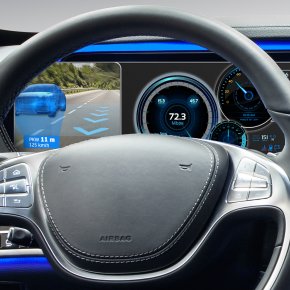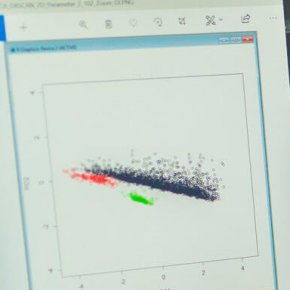

Cloud computing
The future of IT?
How the gaming industry is changing mobility
The gaming industry is leading the way: At the latest since Google's console-free game console Google Stadia has been on the market, it has become clear where the journey for IT will lead. Stadia makes it possible to play your favorite games on virtually any available display - with maximum image quality and without the need to buy the latest high-end graphics hardware in expensive notebooks or PCs. Instead of realizing the virtual gaming worlds locally, all calculations are performed on Google's high-performance servers. Only the video image is streamed to the display device. This is known as Cloud Gaming and is also the next logical step for industry and product development.
What does cloud computing mean for the mobility industry?
In simplified terms, the aim is to provide computationally intensive services not locally in the vehicle or in the mobile app, but rather on cloud servers similar to gaming. Only the results of the calculation flow back to the customer, who is then happy about a quick reaction of their app or is enthusiastic about a high-quality visualization. To achieve this goal, however, the developers have to do some preliminary work and rethink the way software has been developed so far.
Instead of viewing the entire software as a self-contained and self-functioning block, the first step is to extract all sub-functions. This block, known as a monolithic application, is thus split into smaller and reusable services. For example, the calculation of one's own GPS position on a map is a reusable service that can be used in several places within an app. A complete decomposition is referred to as a micro service architecture. The usual problems that arise between software developers who work on the same software and have to make their microservices available to other developers can be solved with appropriate interface contracts. In other words, a set of rules on who is responsible for the functioning of a microservice and to which extent.
Cognizant Mobility helps to fully exploit the advantages of cloud computing
The advantages of a micro-service architecture, whose individual services are not executed locally but rather in the cloud, clearly outweigh the higher programming effort. This means that all functions of an app or software in the vehicle can be scaled independently of each other as required. If the functionality is used very often by customers, then more resources can be scaled to support to this service in the cloud. If the requirements for an app increase, there is no need to buy a new smartphone or even a new car - only new, more powerful containers are deployed, which are called up by the existing hardware.
Introducing the Software as a Service (SaaS) paradigm and redesigning existing software towards a modern micro-service architecture is a specialty of Cognizant Mobility.
In A Nutshell
- Cloud Computing
- Microservice Architectures
- SaaS (Software as a Service)
- DevOps
- AWS (Amazon Web Services)
- Microsoft Azure

Our experience makes it possible to analyze existing program code and to extract meaningful service modules. To do this, the right interfaces in the architecture must be identified. In order to be able to implement changes to the software quickly, we rely on continuous integration and continuous deployment - methods that no clean and modern development process should be without. Neither should fully automated tests.
In addition, Cognizant Mobility experts have already proven on several occasions that it is also possible to take over full operations, as the necessary experience in hosting cloud computing via AWS (Amazon Web Services) or Microsoft Azure are available.
What does the future hold?
The future will be even more oriented towards cloud computing than it already is today. We assume that in just a few years, all physical objects will have access to the cloud via some kind of interface and will execute functionality dynamically where it makes the most sense for the product. This also realizes another advantage that cloud computing brings with it: which is the use of artificial intelligence and data analytics. The processes of machine learning are in most cases too resource-intensive to be executed on small devices. Via a cloud service that learns from service request to service request, electronic devices or components in the vehicle receive almost unlimited computing power. This is exactly what we expect from a digital, networked future.


